WQIP:2015 has identified priority Neighbourhood Catchments for both agricultural and environmental on-ground works where water quality improvements and ecological restoration will produce the greatest results. Priority management actions have also been identified for both the agricultural and environmental components of the plan and will be used to guide investment on a case-by-case basis. When determining final project locations within Neighbourhood Catchments and specific project types, the learnings, and tools developed for WQIP:2015 should be considered as a whole.
FBA’s 2019 WQIP:2015 review and update aligned the plan’s targets to the Australian Government’s Reef 2050 Water Quality Improvement Plan 2017-2022.
Through this process, FBA identified improvements that would keep landholders engaged while providing better support for management practice change; ultimately resulting in improved water quality outcomes.
The review examined the most current science and data for the Fitzroy region. Knowledge gaps and limitations as identified in the WQIP:2015 were addressed through new science or reports commissioned by FBA. With this information, the prioritisation process was revised to provide a stronger connection between science and management actions while contributing to Reef 2050 targets. This new information is now available on this (the WQIP:2015 website).
Key learnings from WQIP:2015 that should be considered in the planning process include:
- The WQIP:2015 is a tool to support users to document and quantify the issues impacting on water quality in the Fitzroy region and the Reef. It assembles and presents complex information in a way that can be understood by decision makers and communicated to the broader community so that the process is transparent. It should not be considered a final ranking for action. Rather, it should be used to identify areas to be considered more closely for the potential to undertake specific projects within Neighbourhood Catchments and used in conjunction with other resources such as on-ground knowledge, site-specific data sets and common sense.
- Both the agricultural and environmental prioritisation processes involved a number of complex underlying processes that have been combined to give final priority scores. It is important that users understand the strengths and limitations of each of these processes and the challenges that arise when combining these processes together and determining final priority areas and actions.
- Where possible, on-ground activities should be aimed at achieving landscape/multiple environmental outcomes (e.g. controlling cattle access to riverbanks and reducing stream bank erosion can help restore the ecological function and protect threatened freshwater turtle nesting sites, while also achieving sediment savings to the Reef). This can be achieved by considering the findings of both the agriculture and environmental prioritisation processes together.
- There are a range of threats impacting the health and function of the Great Barrier Reef and its catchments. To understand how these impacts affect the ecosystem as a whole, it is necessary to recognise the ecological processes at work and how the system works across the landscape.
- Different funding priorities will require different adaptations of these tools to reflect desired outcomes. For example, if funding is secured for fish barrier removal, the environmental prioritisation tool can be weighted so that this metric is given a higher ranking than other environmental attributes. This will create a new priority ranking system that is weighted towards fish barrier removal but also considers the value of wetlands and reef connectivity to overall catchment and Reef health. As such, the funding priorities are met while also maximising the likelihood of achieving additional environmental benefits for the region.
- Investments should primarily be undertaken in priority areas identified in WQIP:2015. Investment aimed at achieving water quality outcomes outside of these areas should only be undertaken where it complements investment within priority catchments and where the investment will enhance water quality outcomes or there is the identification of a new threat/driver not identified in WQIP:2015. This may occur as a result of a new understanding of the science behind the sediment transport processes in the Fitzroy.
- When determining final project locations within Neighbourhood Catchments and specific project types, the learnings of, and tools developed for WQIP:2015 should be used in conjunction with site-specific tools such as GIS mapping, satellite imagery, property-scale mapping, previous project reports, case studies, and forage reports.
- Local knowledge including regional experts, project officers, field staff and landholders should all be consulted to ‘ground-truth’ the desk-based analysis.
- On-going support during project implementation is required, as well as post on-ground works. This support should be tailored for each project type but will generally be integrated and include extension support in unison with planning and financial incentives.
- There is an opportunity to work with the mining industry to achieve outcomes for the region (as mines have ownership of 4% of land area).
- Establish and implement a comprehensive monitoring and evaluation process that influences existing projects as well as future design and investment.
Agriculture-specific considerations:
- Stocking rate is considered one of the single greatest drivers of land condition that can be managed in the grazing industry (in contrast to soil type or rainfall for example) and should be a consideration of all projects related to this industry. Knowledge and management of a property’s long term stocking rate are critical to achieve good water quality benefits as well as long term profitability.
- Extension support will need to be provided by staff with a high technical knowledge and be multi-faceted (e.g. focus on whole-of-grazing-business management change to achieve environmental outcomes).
- Integrated training and extension alone is not enough to repair all types of degraded land. The amount and type of works required will be determined on a property-by-property approach dependent on landholder capacity and the highest risk drivers of erosion to achieve whole of property outcomes. Where there are remediation works required with limited private benefit, such as actively eroding gullies, deteriorated riparian areas and bad scalds, there is a need to provide public investment in on-ground works.
- Scalds, alluvial gullies and riparian areas are often interconnected and on-ground works would need to be designed to ensure all the drivers are addressed. For example, alluvial gullies are often started where cattle access streams to drink. On-ground works should address the cause as well as the symptom (e.g, gully works should include actions to repair scalds or reduced groundcover above the active gully head).
- Focus on areas of fine or highly erodible soils if possible as these are the soils travelling the furthest into, and doing the most damage to, the Reef.
- Sediment savings through the construction of contour banks or moving to zero tillage operations on farming lands can be very cost-effective and provide immediate benefits.
- For farming lands there are opportunities to consider reverse auction projects (such as moving to zero tillage practices).
The priority Neighbourhood Catchments and management actions can be found here.
Environmental-specific considerations:
- The overall ecosystem prioritisation process has been biased towards coastal environments. This has been done as the primary purpose of the prioritisation was aimed at achieving Reef improvements in addition to local water quality outcomes. This bias should be considered when assessing work types and the relative value of wetlands to provide regional services for outcomes that are not Reef-centric. It is recommended that a separate assessment for inland wetlands be undertaken to prioritise these systems.
- The priority wetlands presented on this website have been ranked according to a specific set of considerations. Each time funding is available for wetland/ecosystem repair works these criteria must be reassessed (e.g. the location of works aimed at maintaining wetlands that provide important ecosystem services will be different than works aimed at repairing degraded wetlands that have a high potential to provide the same services). As such, each time the tool is used a clear set of objectives must be defined and the weighting for each of the scoring criteria adjusted to meet the stated objectives.
- The fish barrier prioritisation process excluded barriers in wetlands, ponded pastures and other off-stream habitats as the focus was on connectivity for migratory fish throughout the region. Many of these may be important, but their is limited understanding about their function to assess their priority just yet.
- There are a large number of un-ranked features in the Fitzroy Region and it is important to consider their impact on the success of any management action at priority sites (e.g. is there an un-ranked fish barrier identified on-ground that would negate the benefits of repair works being planned?)
The priority neighbourhood catchments and management actions can be found here.

